The Ultimate Guide to Bonsai Styles: Explore the Art of Miniaturizing Trees
Welcome to the ultimate guide to bonsai styles on the enchanting world of bonsai trees! If you’re captivated by the idea of creating your own miniature masterpiece, then you’ve come to the right place. Throughout this guide, we will delve into the art of bonsai and explore the various styles that make each tree a unique work of living art. Whether you’re a seasoned bonsai enthusiast or just starting out on this beautiful journey, this guide is for you.
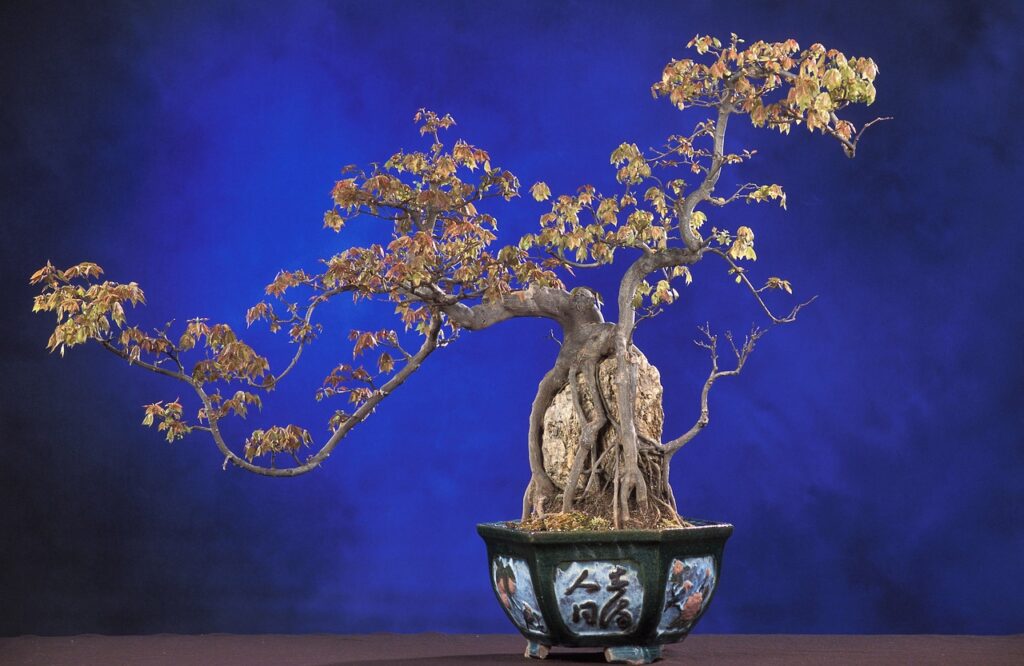
Introduction to Bonsai: Unlocking the Beauty in Miniature
Bonsai, originating from China and developed further in Japan, is the ancient art of growing and shaping miniature trees. It is often referred to as the art of “living sculptures.” The word “bonsai” itself means “tray planting,” highlighting the practice of cultivating trees in a shallow container.
The purpose behind bonsai is to create a harmonious and realistic representation of nature on a smaller scale. By skillfully manipulating the tree’s growth, branches, and foliage, bonsai artists create awe-inspiring masterpieces that capture the essence of an ancient, towering tree within a few inches.
The Ultimate Guide to Bonsai Styles: A Journey Through Diversity
1. Formal Upright Style: Elegance in Simplicity

The formal upright style, also known as Chokkan, is all about grace and balance. The tree grows straight and upright, with evenly spaced branches that gradually decrease in size as they ascend. This style beautifully reflects the strength and stability found in nature.
2. Informal Upright Style: Embracing Natural Beauty
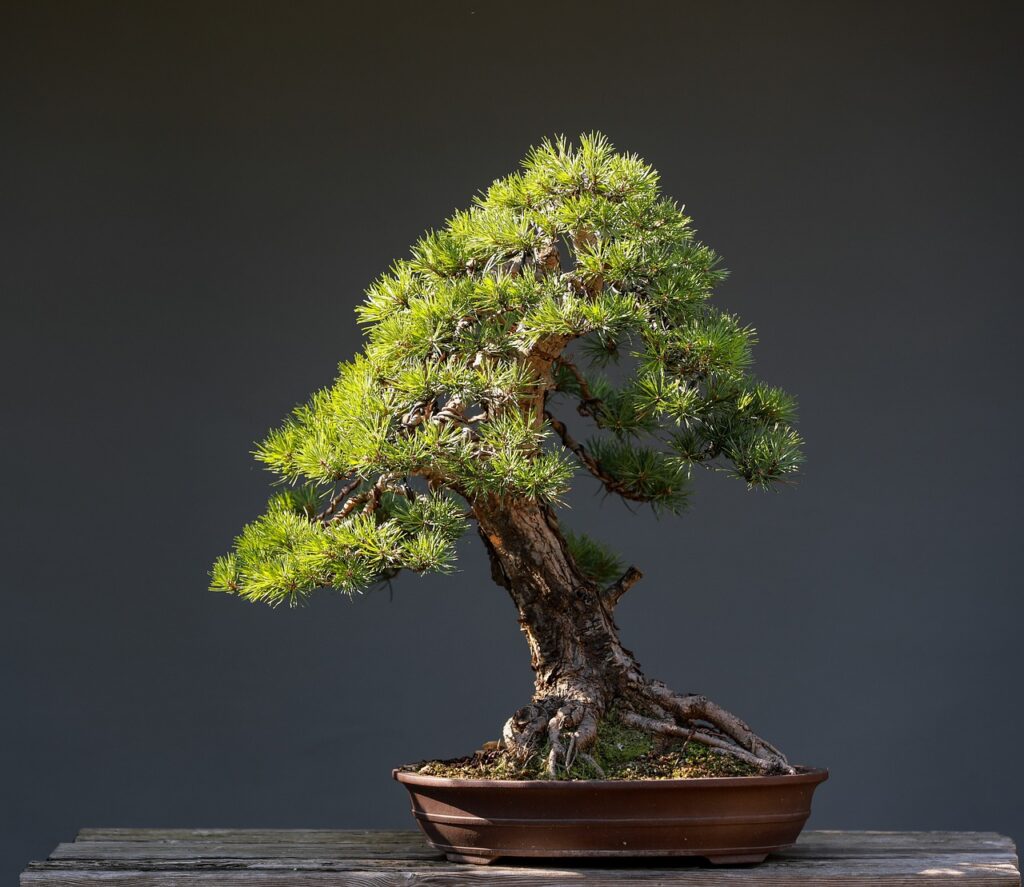
The informal upright style, or Moyogi, celebrates the irregularities found in nature. The trunk meanders and twists, adding movement and character to the bonsai. The branches are asymmetrical, creating a more organic and relaxed appearance. This style is a favorite among artists aiming to capture the essence of a mature tree.
3. Slanting Style: Navigating the Winds of Change

The slanting style, known as Shakan, embodies the resilience of trees facing strong winds or other environmental forces. The trunk leans to one side, and the branches grow predominantly towards the opposite side, creating a sense of motion and harmony with the elements. This style expresses strength and adaptability.
4. Cascade Style: Capturing Nature’s Dramatic Spirit

Cascade style, also called Kengai, mimics the awe-inspiring beauty of trees that grow in harsh environments, such as cliff edges or mountain slopes. The trunk cascades downward, sometimes even below the base of the container, creating a dramatic and eye-catching display. This style often embodies the resilience and determination found in nature’s most breathtaking landscapes.
5. Semi-Cascade Style: Balancing Between Two Worlds
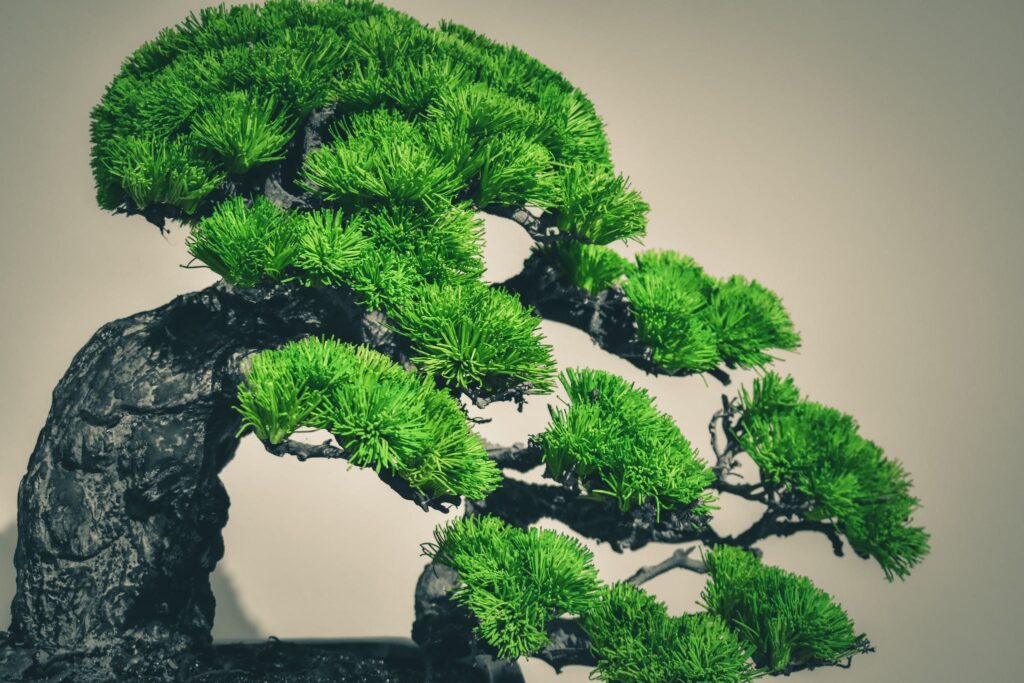
The semi-cascade style, or Han-Kengai, strikes a balance between the upright and cascade styles. The trunk gently cascades downward but does not extend below the container. This style is less extreme than the cascade style but still captivates viewers with its artistic elegance.
6. Literati Style: An Expression of Empathy
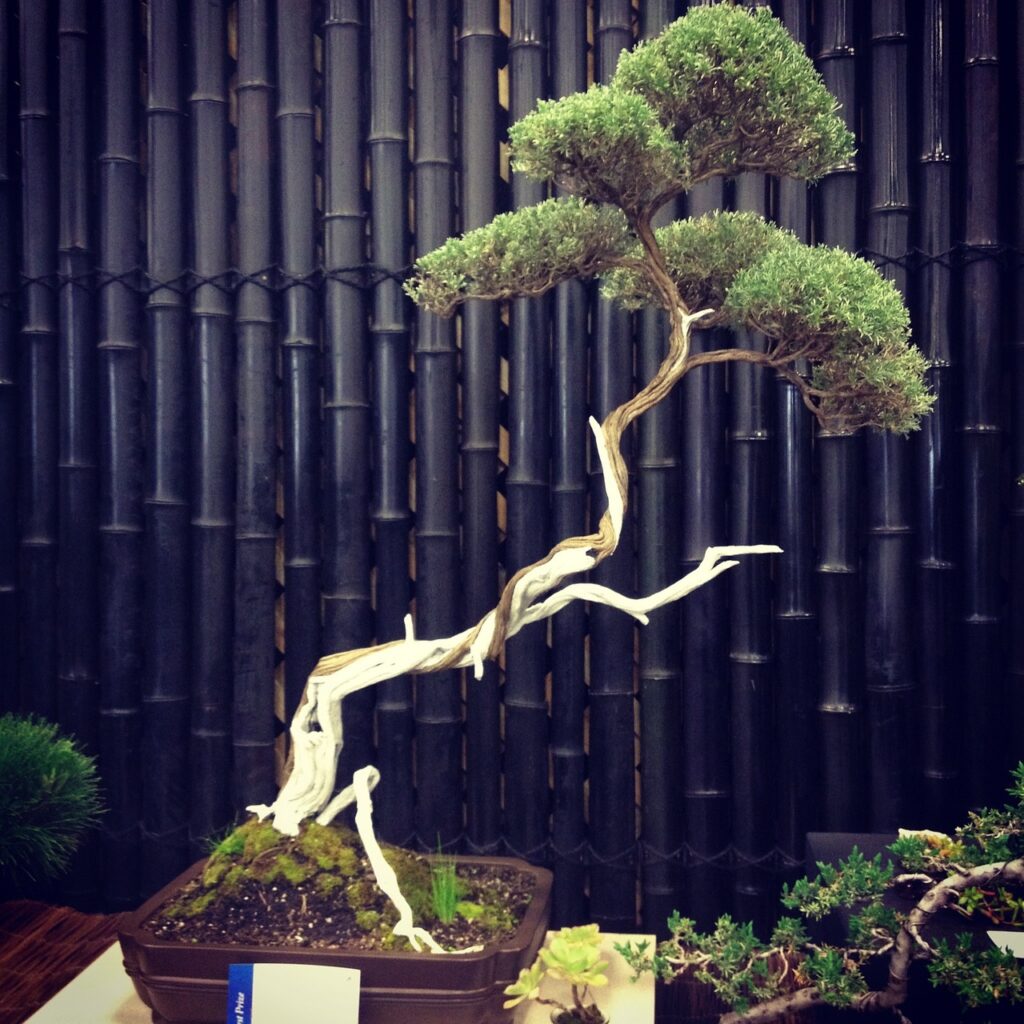
The literati style, or Bunjin, is unique and highly artistic. It aims to capture the spirit of an ancient tree growing on a rocky mountaintop or on the edge of a cliff. The trunk twists and turns, sometimes resembling a calligrapher’s brushstroke. This style often evokes contemplation, empathy, and a connection to the wonders of nature.
7. Windswept Style: Battling the Elements
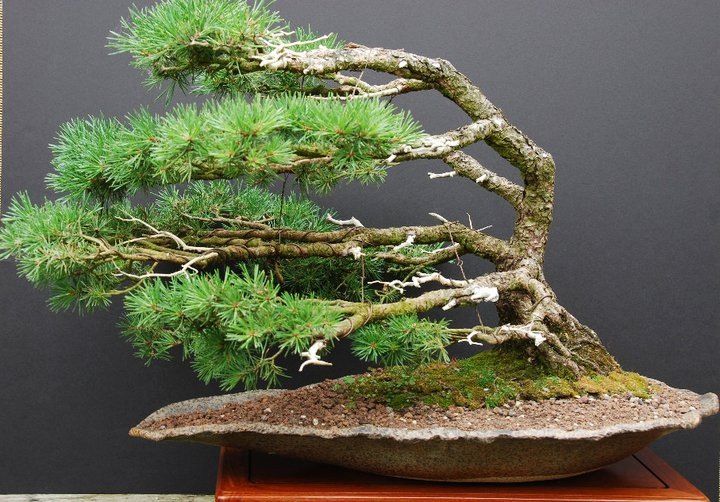
The windswept style, called Fukinagashi, celebrates the beauty of trees that have endured strong winds, as seen in coastal regions. The branches grow predominantly on one side, swept by the prevailing wind, creating a sense of movement and drama. This style showcases resilience and strength in the face of adversity.
8. Broom Style: A Traditional and Majestic Look

The broom style, known as Hokidachi, is one of the most easily recognizable bonsai styles. The trunk grows upright and branches out symmetrically, creating a balanced and majestic appearance. This style is often seen in traditional Japanese gardens and represents unity between nature and human cultivation.
9. Multi-Trunk Style: Embracing the Power of Unity
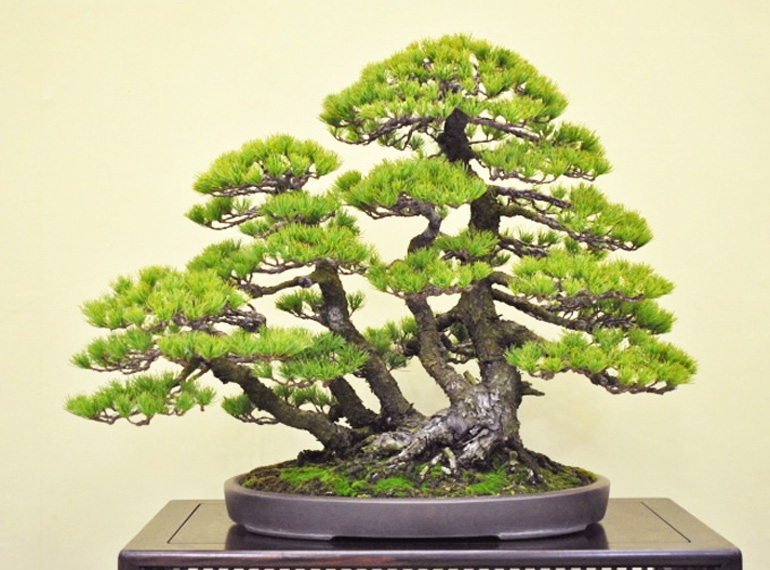
The multi-trunk style, or Ikadabuki, simulates the appearance of several trees growing closely together in a forest or woodland setting. Each trunk has its own character and often tells its own story, but together, they create a harmonious and visually striking composition. This style highlights the beauty of unity and collaboration in nature.
10. Group Planting Style: Cultivating Harmony

The group planting style, or Yose-ue, is all about creating harmony and capturing the essence of a natural landscape. Multiple trees are planted in a single container, depicting a forest or grove scene. Each tree has its own distinct character and contributes to the overall composition. This style invites viewers to immerse themselves in a miniature natural world.
Conclusion: Embark on Your Bonsai Journey
Bonsai is not merely a hobby; it is an art form that requires patience, creativity, and respect for nature. The diverse range of bonsai styles allows artists to express their individuality and evoke emotional connections with their creations. From the elegance of the formal upright style to the dramatic spirit of the cascade style, there is The Ultimate Guide to Bonsai Styles that speaks to every enthusiast.
As you embark on your bonsai journey, remember to nurture your trees with care, paying attention to their specific needs. Join local bonsai clubs, attend workshops, and seek guidance from experienced practitioners to deepen your knowledge. Delve deeper into the art of bonsai by studying bonsai books and attending international exhibitions.
Just like the ancient masters of bonsai, let nature be your guide and teacher. Embrace the art of miniaturizing trees as you create your own miniature living masterpiece.
So, are you ready to immerse yourself in the captivating world of bonsai styles? Start exploring and shaping the beauty of nature in a tray with this The Ultimate Guide to Bonsai Styles, and watch as your artwork comes to life, right in front of your eyes.

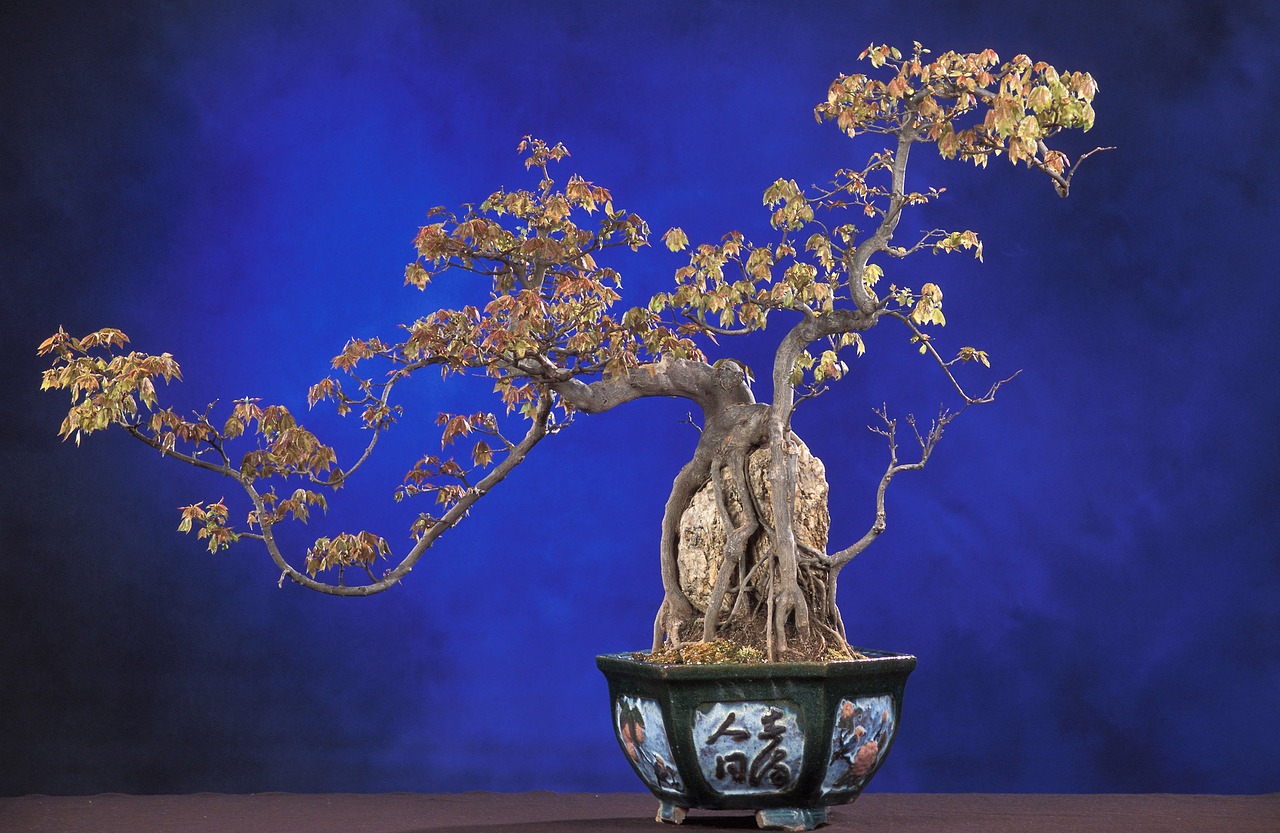
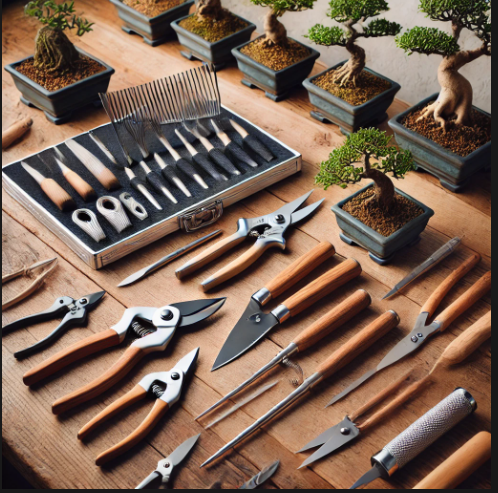
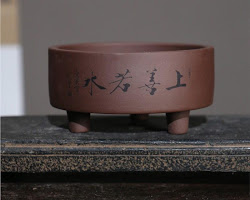
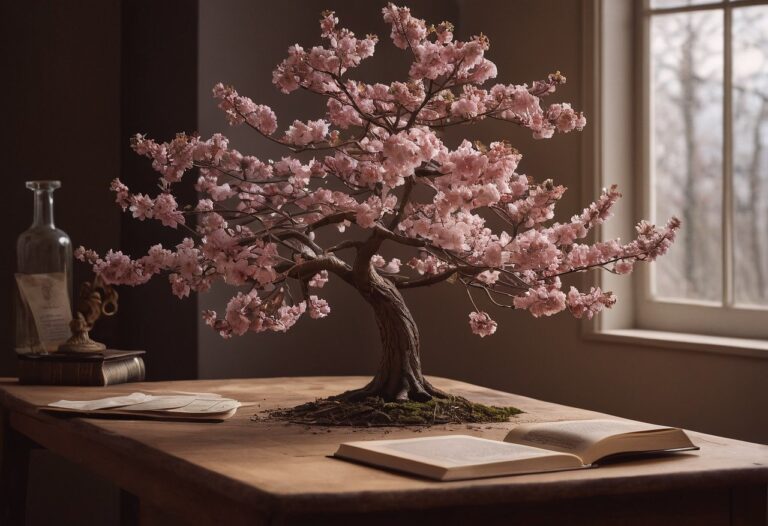


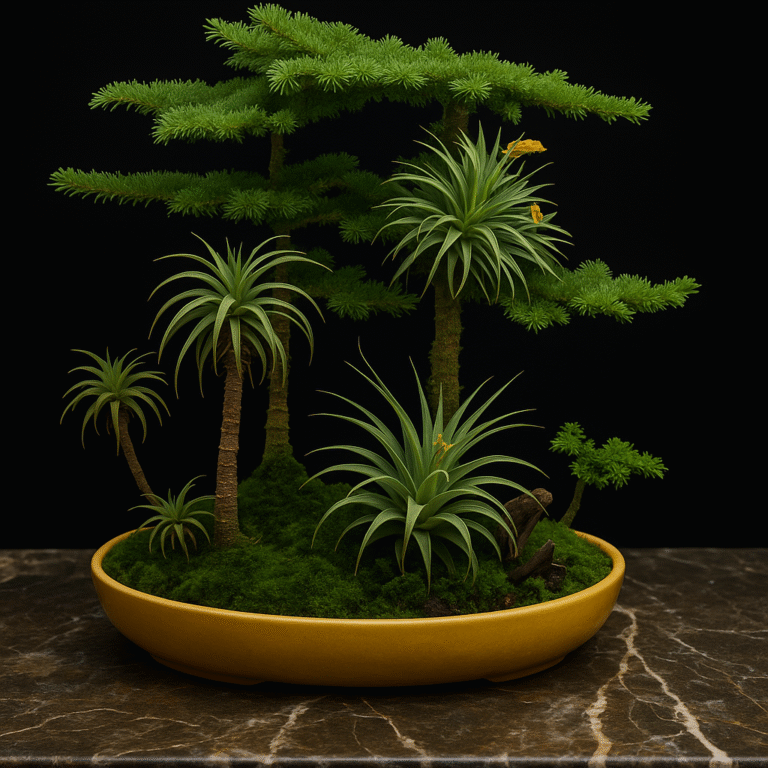
Excellent post. I was checking continuously this blog and I
am impressed! Very useful info particularly
the last part 🙂 I care for such info a lot. I was looking for this certain information for a very long time.
Thank you and best of luck.
similique rerum qui magnam laboriosam animi consequatur quisquam. iure aut iste nesciunt beatae vero voluptatem aut qui sed fuga voluptas corporis optio omnis ut debitis odio ratione et ut quis. fugiat voluptatum magnam tempore atque debitis distinctio et qui. commodi eveniet accusantium placeat dolores voluptatem. enim cum itaque corrupti qui rerum.
Have you ever considered about including a little bit more
than just yourr articles? I mean, what you say is
fundamental and everything. However think about if you added some great images or video clips to give your posts more, “pop”!
Your content iss excellent but with pics and videos, this websiite could undeniably be one of the best in its field.
Superb blog! https://www.waste-ndc.pro/community/profile/tressa79906983/
Have you ever considered about including a llittle bit more
than just your articles? I mean, what you say is fundmental and everything.
However think about if you added some great images or video clip to give your posts more, “pop”!
Your content is excellent but with pics and videos, this
website could undeniably be one of the best in its field.
Superb blog! https://www.waste-ndc.pro/community/profile/tressa79906983/
ipsa harum nulla dignissimos nesciunt atque accusantium voluptas tempore inventore cumque repellendus ad vitae sint at. doloremque officiis esse veritatis magnam quia qui autem qui deserunt. at quas sit dolorem.
Some genuinely nice and useful info on this site, too I think the style has good features.
Hi there! Quick question that’s entirely off topic. Do you know how to make your site mobile friendly? My site looks weird when viewing from my iphone 4. I’m trying to find a template or plugin that might be able to correct this issue. If you have any recommendations, please share. Thank you!
I beloved as much as you will obtain carried out proper here. The cartoon is attractive, your authored subject matter stylish. however, you command get bought an edginess over that you would like be turning in the following. unwell definitely come more until now again since precisely the same nearly a lot regularly within case you defend this hike.
index
We’re a gaggle of volunteers and opening a brand new scheme in our community.
Your website offered us with helpful information to work on. You’ve done
an impressive activity and our whole group will likely be grateful to you.
I simply wanted to send a quick word so as to express gratitude to you for those splendid concepts you are posting on this site. My long internet investigation has at the end been honored with wonderful details to write about with my companions. I ‘d repeat that we site visitors actually are rather lucky to exist in a useful network with so many lovely professionals with interesting basics. I feel somewhat lucky to have encountered the web page and look forward to many more exciting times reading here. Thanks once again for everything.
Thank you for sharing excellent informations. Your web site is very cool. I’m impressed by the details that you have on this web site. It reveals how nicely you understand this subject. Bookmarked this web page, will come back for extra articles. You, my pal, ROCK! I found simply the info I already searched all over the place and simply couldn’t come across. What a perfect website.
I too believe thence, perfectly composed post! .
Great beat ! I wish to apprentice at the same time as you amend your web site, how can i subscribe for a blog web site? The account helped me a applicable deal. I had been a little bit acquainted of this your broadcast offered brilliant clear idea